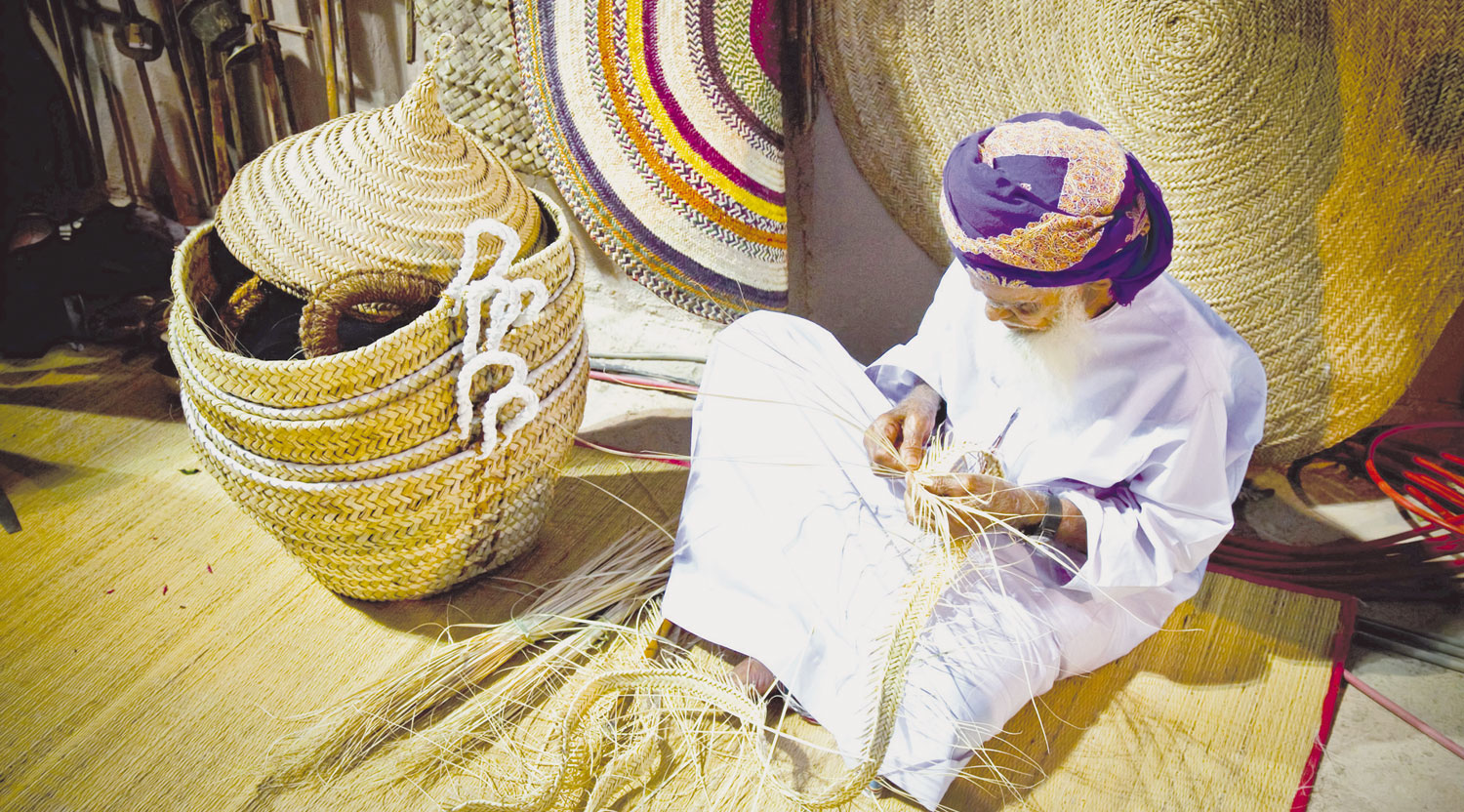

Elements of Oman’s greatly cherished and much-prized crafts and traditional wear are being replicated in factories in Asia for distribution and sale in local markets in the Sultanate — a practice that threatens to imperil the livelihoods of Omani craftsmen and women.
Cheap, machine-made replicas of the kumma (traditional Omani cap), kafeer (container made of date palm fronds) and jahla (clay pot), among other types of handcrafted and hand-woven merchandise, are sold by non-Omani traders in traditional souqs around the country.
According to local sources, huge quantities of such spurious merchandise are being shipped in from countries like the Philippines, Bangladesh and China, and marketed locally at throwaway prices. The implications for the local crafts industry, in terms of reputational damage, loss of revenue for craftsmen and women, erosion of livelihoods, and so on, are very worrisome, according to local artisans.
Significantly, this dubious trade is also undermining the long-standing efforts of the Public Authority for Crafts Industries (PACI) in, on the one hand, rejuvenating Omani traditional crafts and, on the other, sustaining the livelihoods of potentially thousands of men and women engaged in crafts-based cottage industries across the Sultanate.
Scores of Omani youngsters too have evinced interest in traditional craft-based professions as alternatives to conventional careers in offices and industries.
These gains made by the Authority are at risk if the market continues to be flooded with cheap imports from abroad, a local craftsman warned. “With this competition from expatriates, many young Omanis are being forced to consider jobs in offices, with the result of some of these crafting traditions may be lost forever,” lamented Saleh al Wahaibi.
Speaking to the Observer, Al Wahaibi called for tougher regulation on the crafts sector as well as strict penalties for those engaged in the illicit import and distribution of cheap imitations. “Omani crafts should be restricted to Omanis alone and those getting involved illegally should be severely punished,” he stressed.
Prevailing efforts to promote local handicrafts and traditional wares are typically limited to festivals, exhibitions, limited-time-only crafts markets, and high-end outlets in luxury hotels and some retail destinations. These efforts do not provide suitable exposure and marketing opportunities for Oman’s burgeoning crafts industry, some craftsmen point out.
Moreover, many of these outlets tend to offer a mix of authentic, low-quality and imitation products, which undermines confidence in the quality and value of genuine Omani merchandise, they warn.
“There’s hardly any original craft-related merchandise on displays in souqs,” says Fatma al Ruqaishi, a crafts hobbyist. “Even if there is, it would be probably sold at twice the cost, which will put away a lot of prospective buyers. Tourists, for example, would like to pick up Omani crafts as souvenirs of their visit, but only if they are affordable.”
“It’s important to have permanent outlets in major retail and shopping destinations such as the traditional souqs in Muttrah and Seeb, the big malls, and airports and seaports, for Omanis to showcase their products at competitive prices. This approach will encourage them to come up with new crafts and products,” Fatma added.
Officials at PACI said the Authority continues to exert all efforts to regulate the traditional crafts sector, while also making it attractive and viable for nationals to get involved as artisans. The underlying goal is to sustain and develop the nation’s rich and vibrant crafts heritage with a view to encouraging Omanis to consider professions in handicrafts to supplement household incomes.
A series of two-year programmes conducted by PACI have helped inject new life into traditional handicrafts, an official said. “Many trainees who participated in this programme have now started their own businesses and are selling their products in small shops and local markets. The programme offers skills related to woodworking, carving, pottery and palm fronds related crafts, among others,” the PACI official noted.
Moreover, statistics from PACI show there is an increase in the number of Omani craftsmen and women registered with the Authority. It follows a strategy that seeks to get young Omanis enthused about craft-based activities that are rooted in national pride and the Sultanate’s rich heritage.
Zainab Al nassri
Oman Observer is now on the WhatsApp channel. Click here



